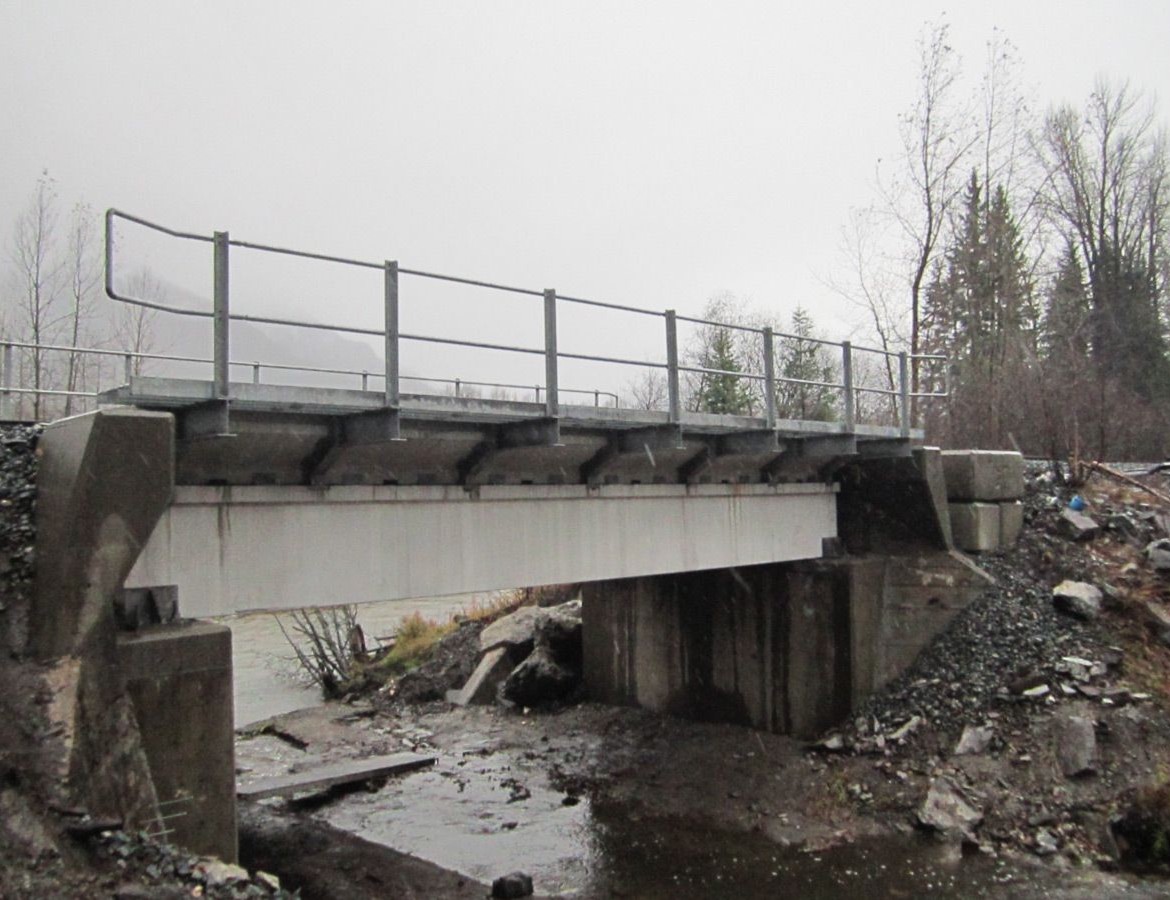
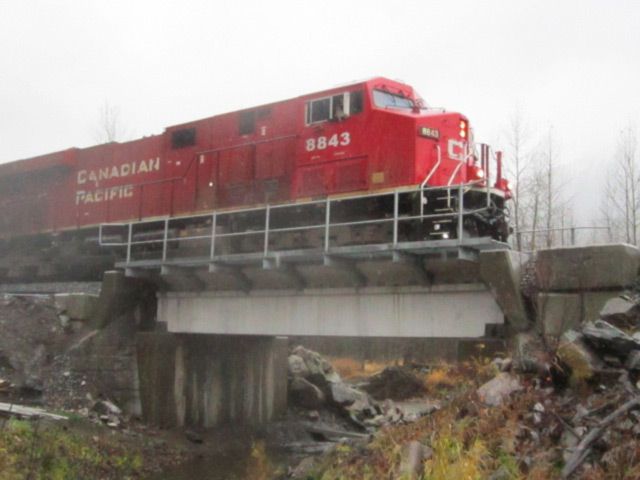

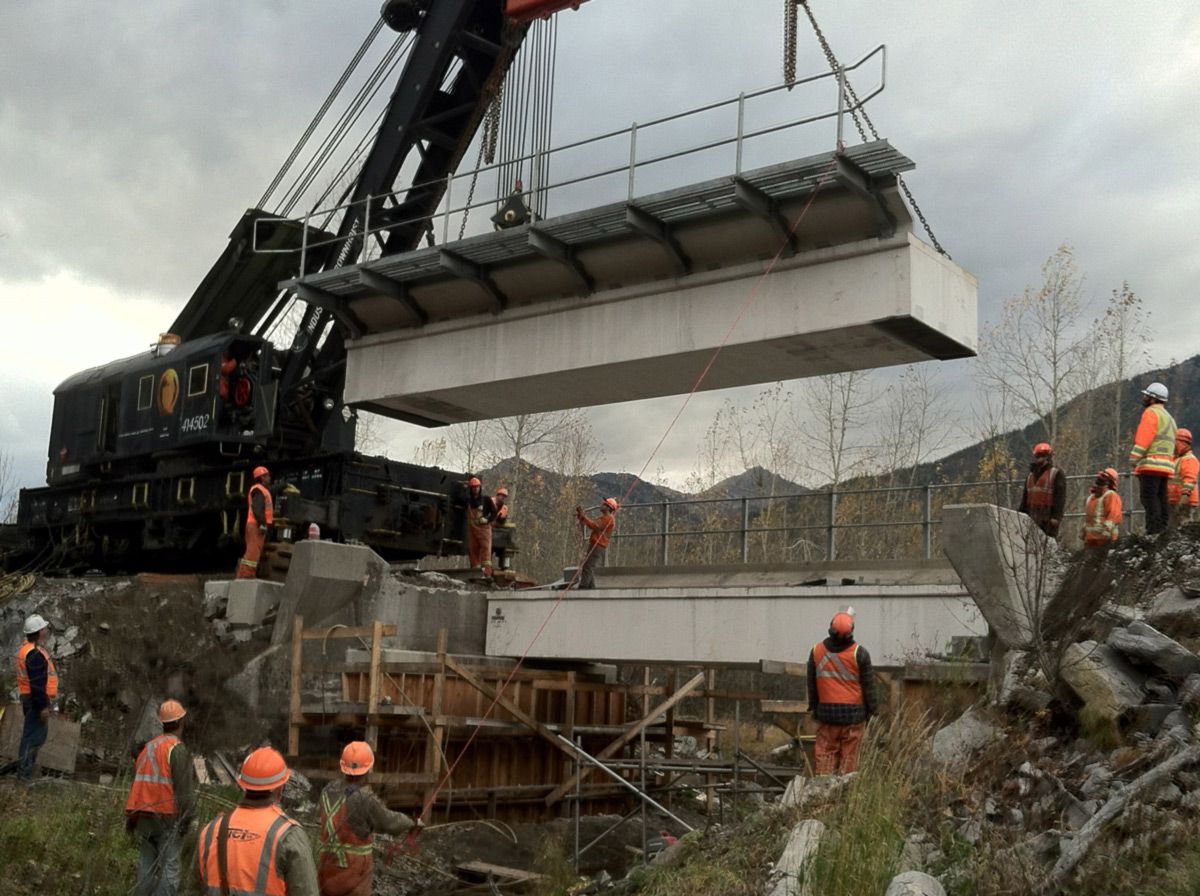

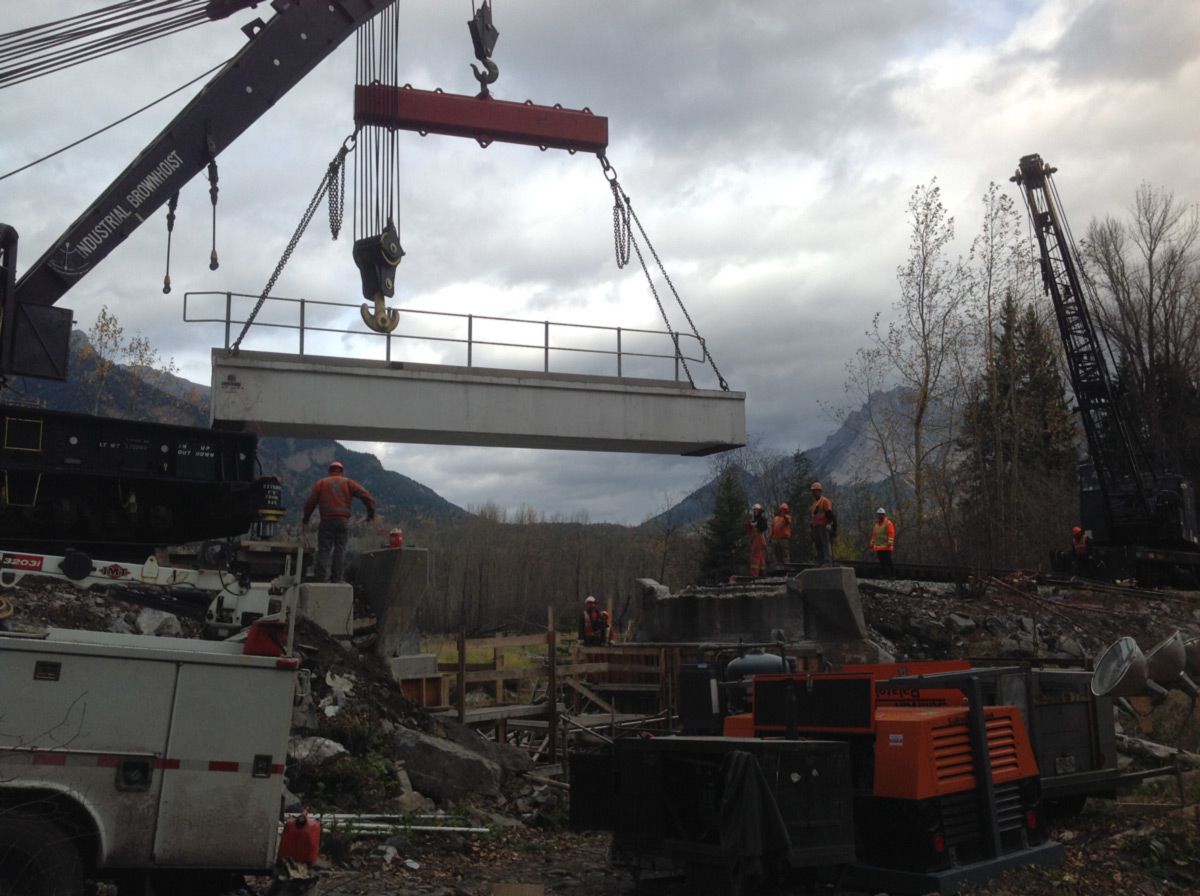
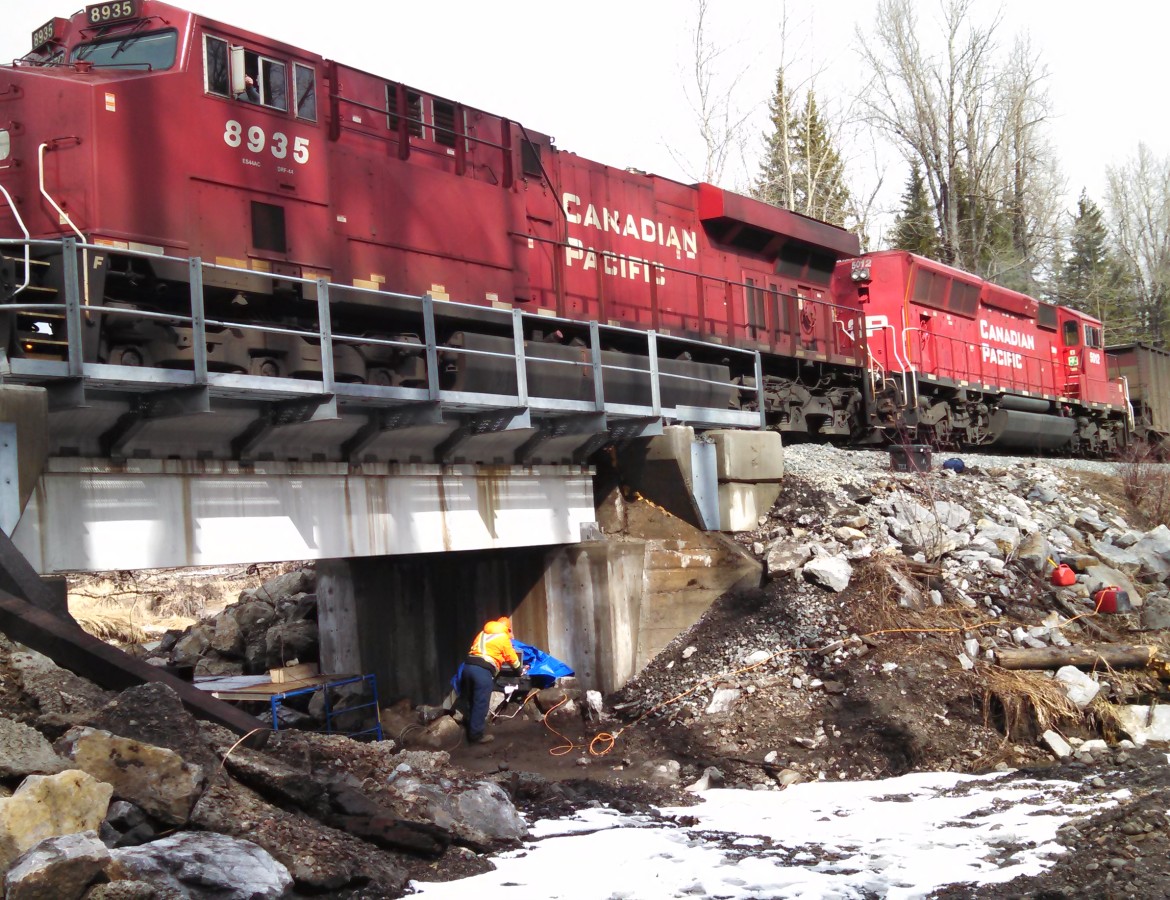
The Class 1 railroads of North America were pioneers of bridge technology decades before anyone conceived of an automobile. Although some criticize the railroads for their simplicity and old-fashioned methods, some of the earliest, most recent and best innovations related to Accelerated Bridge Construction (ABC) originated in railroad applications.
Although the railroads tend to stick with their tried-and-true methods, they also recognize that their bridge assets have to be installed literally overnight, yet be able to last for more than a century. As a leader in railroad bridge technology, Canadian Pacific Railway recognized early on that the success of Hillman Composite Beam (HCB®) bridge technology would lend tremendous value to its infrastructure assets.
Typical railroad bridges are often installed with rail-mounted locomotive cranes. Although this facilitates simple access in remote locations, this equipment has limited lifting capacity and reach. An HCB bridge provides a solution with a substantially lighter weight than conventional bridges, thus allowing the railroads to set longer bridges with their current rail-mounted equipment. Further, the inherent corrosion-resistant properties of the HCB provide the railroads with a bridge structure requiring virtually no maintenance. With these benefits, plus being the low-cost option, Canadian Pacific elected to replace the decaying steel bridge near Fernie, British Columbia, with the first revenue service HCB railroad bridge in the world.
On October 22, 2014, Canadian Pacific crews replaced the existing bridge with two parallel 42,000-pound HCB prefabricated bridge modules during a 12-hour traffic block. The project included removal of the existing track and existing superstructure and then installation of the two pre-fabricated bridge superstructure modules.
Because the modules had ballast curbs, walkways and handrails pre-installed, the track crew was able to come in immediately thereafter and install the track. The bridge reopened to revenue service in less than 10 hours.
Project Specs:
HCB Piece Weight
Owner: Canadian Pacific Railway, Western Division
Contractor: Canadian Pacific Railway
Completion date: October 2014
Project Sheet: Click here for downloadable PDF version